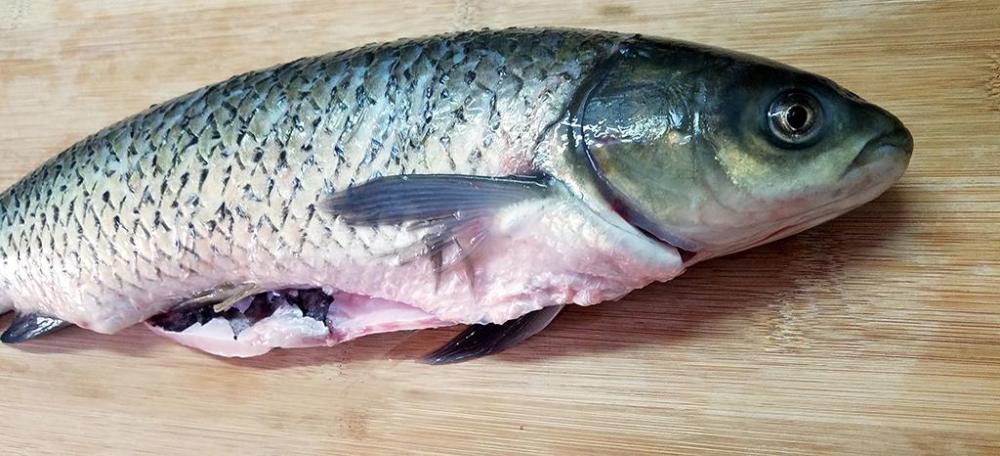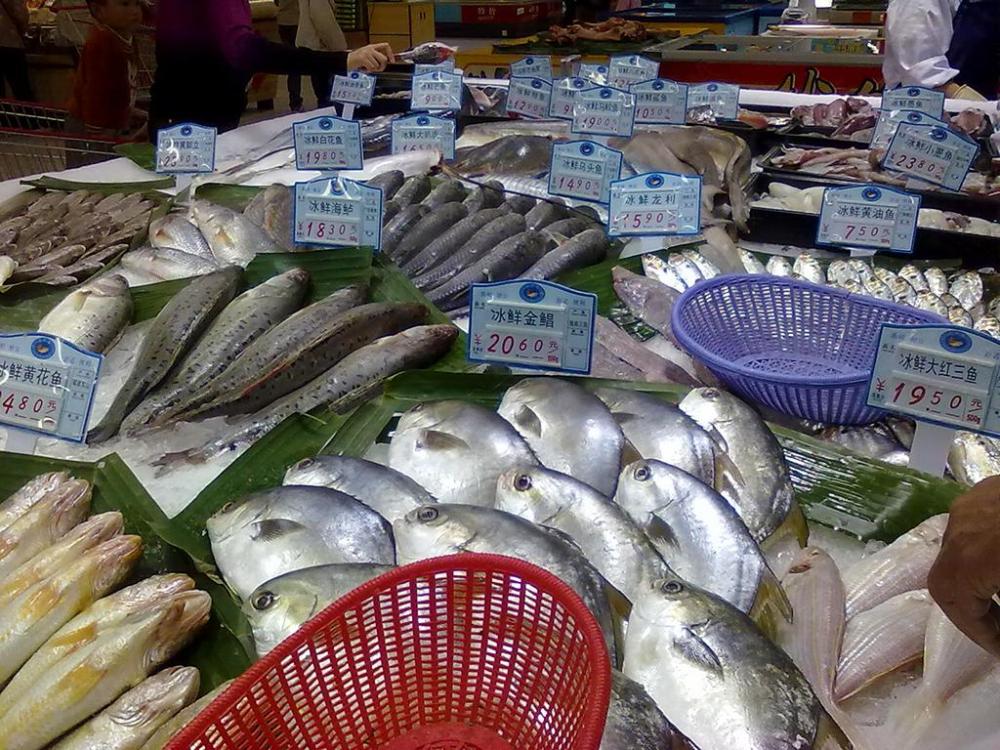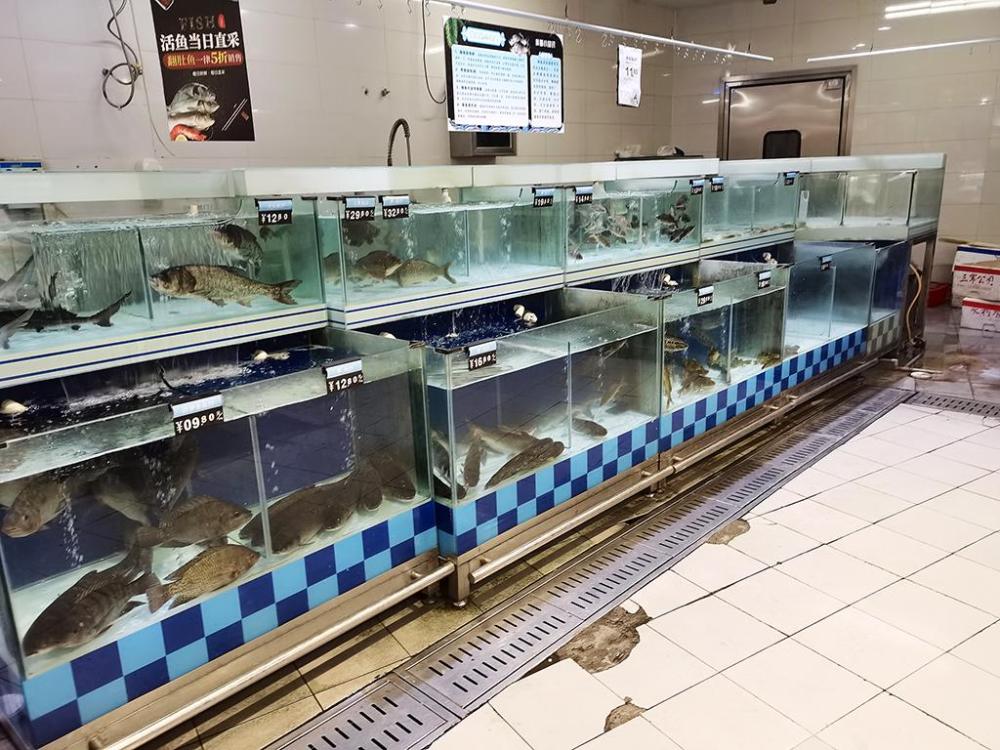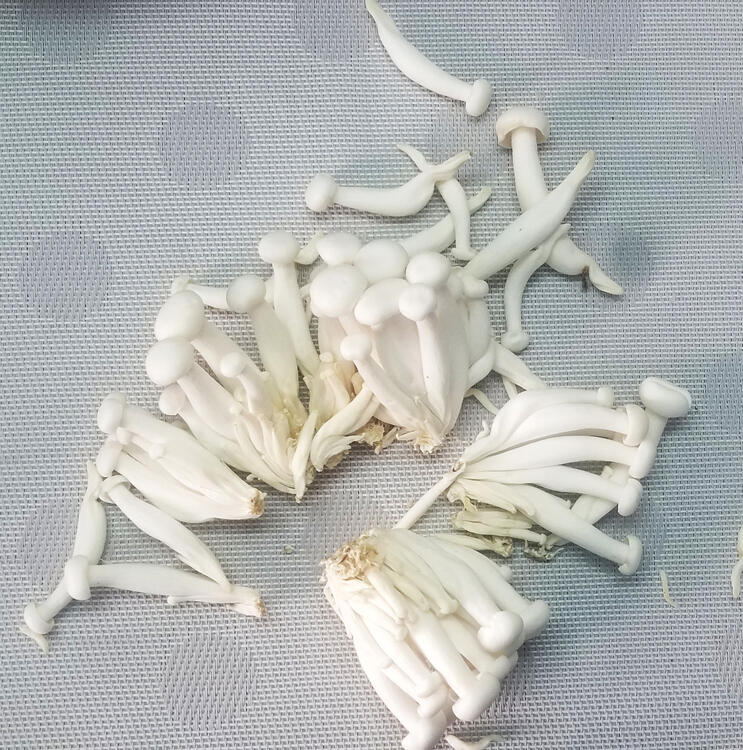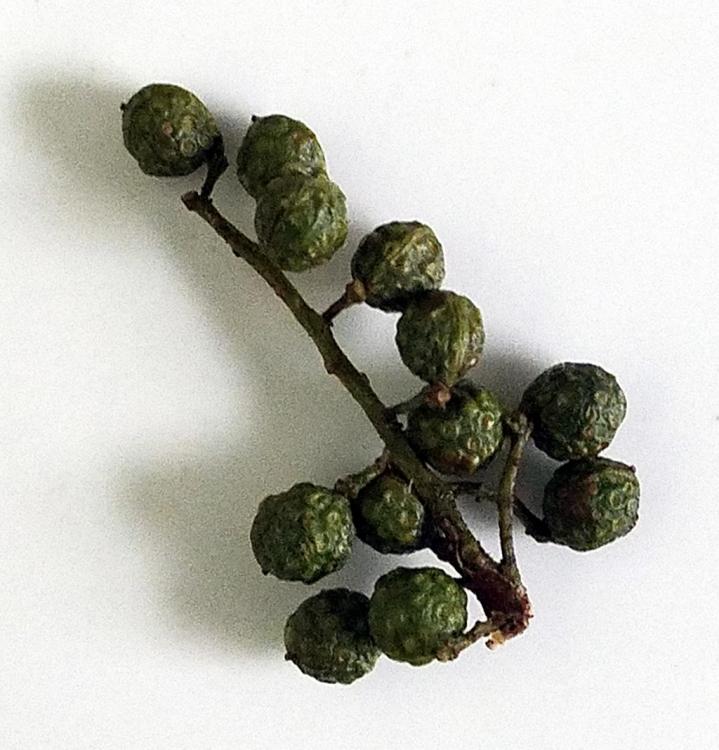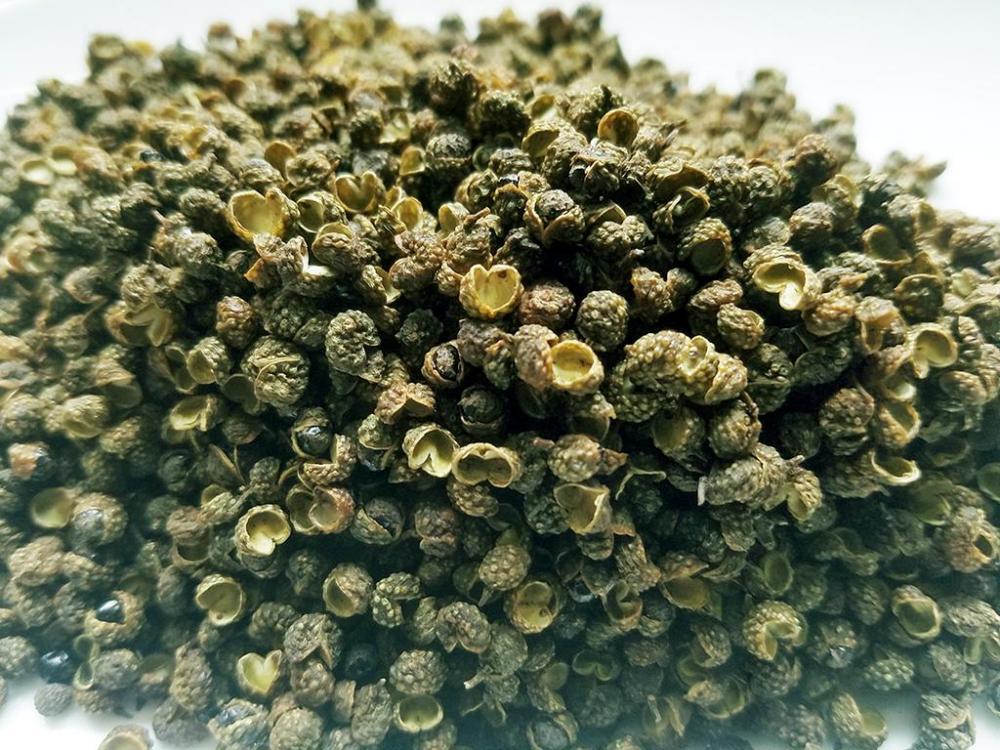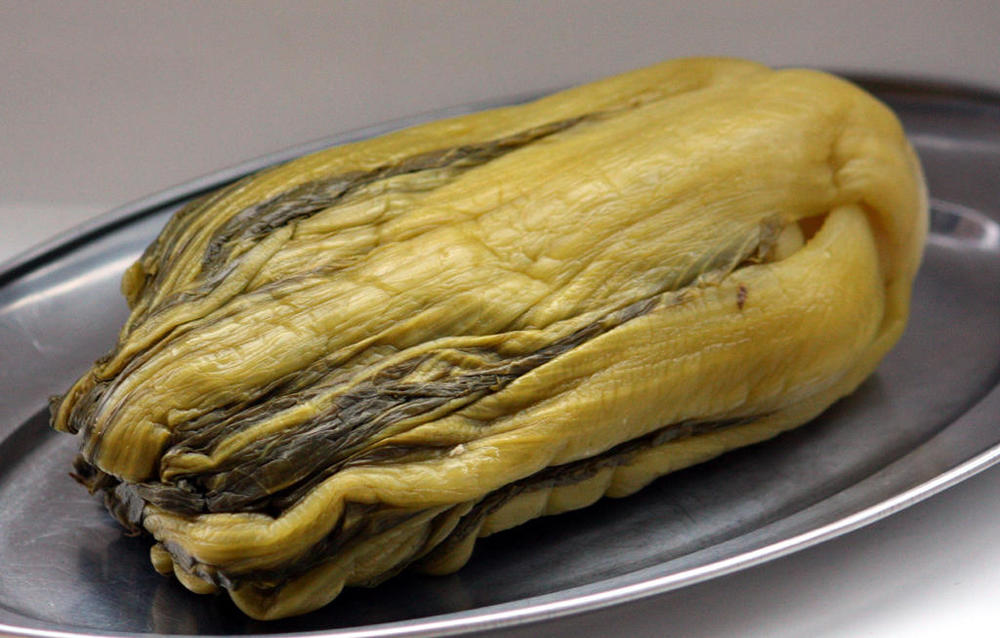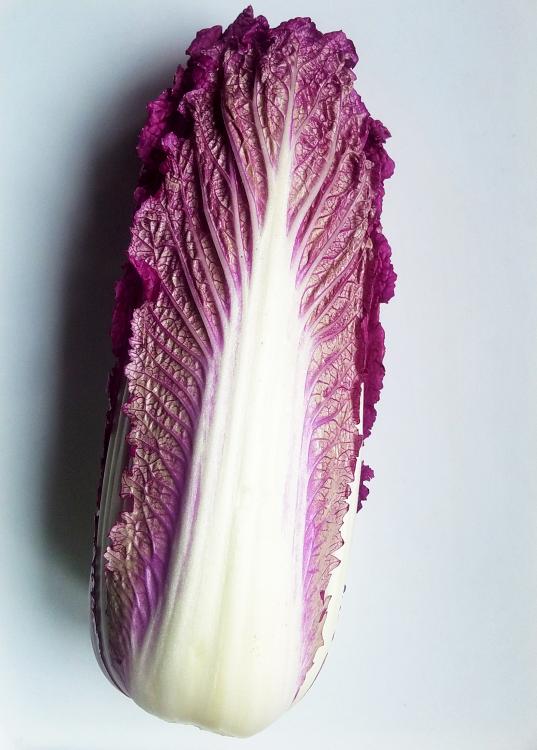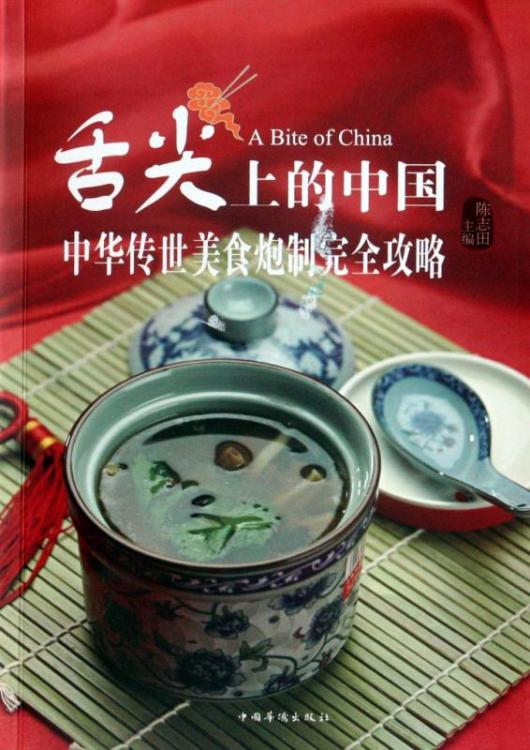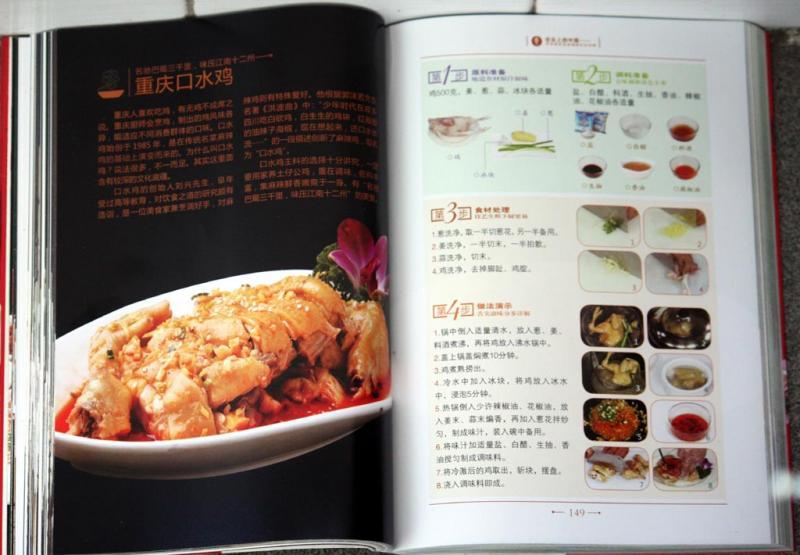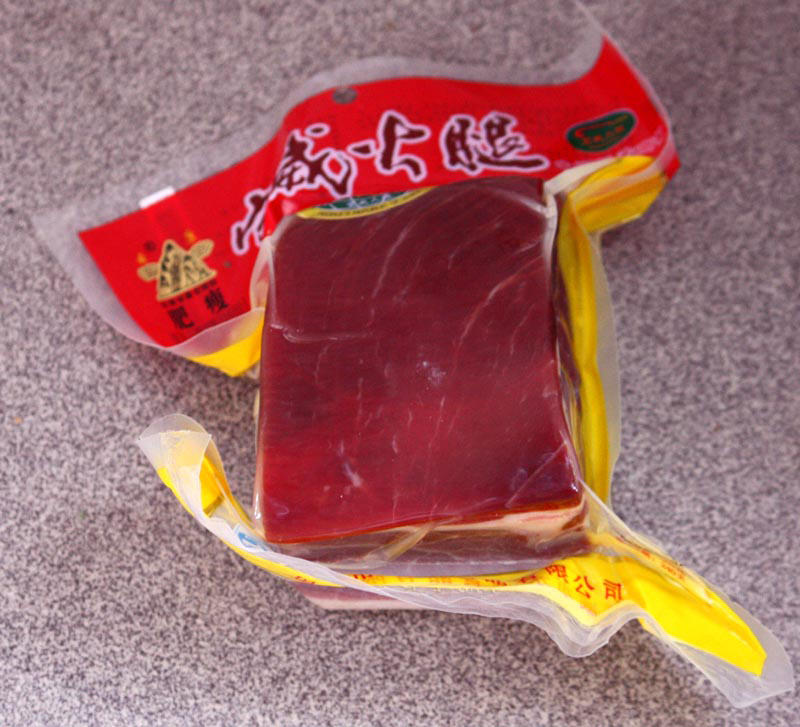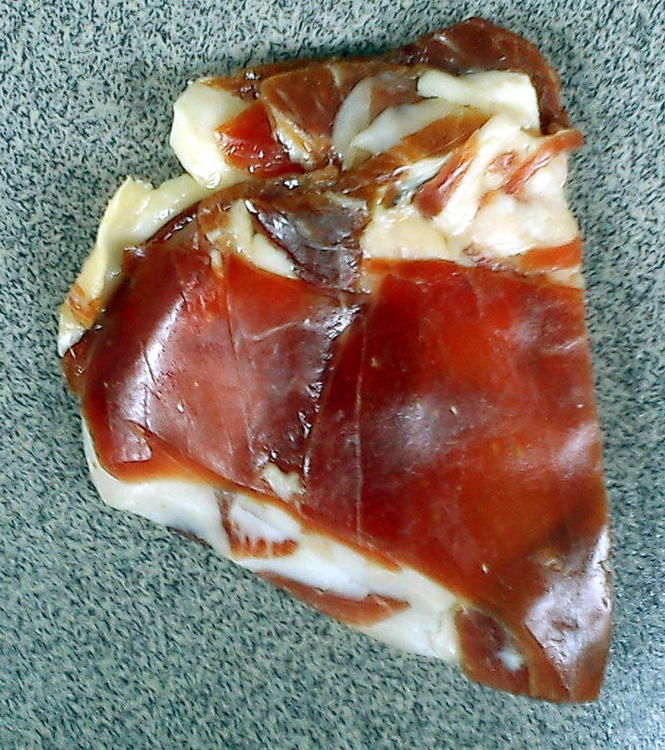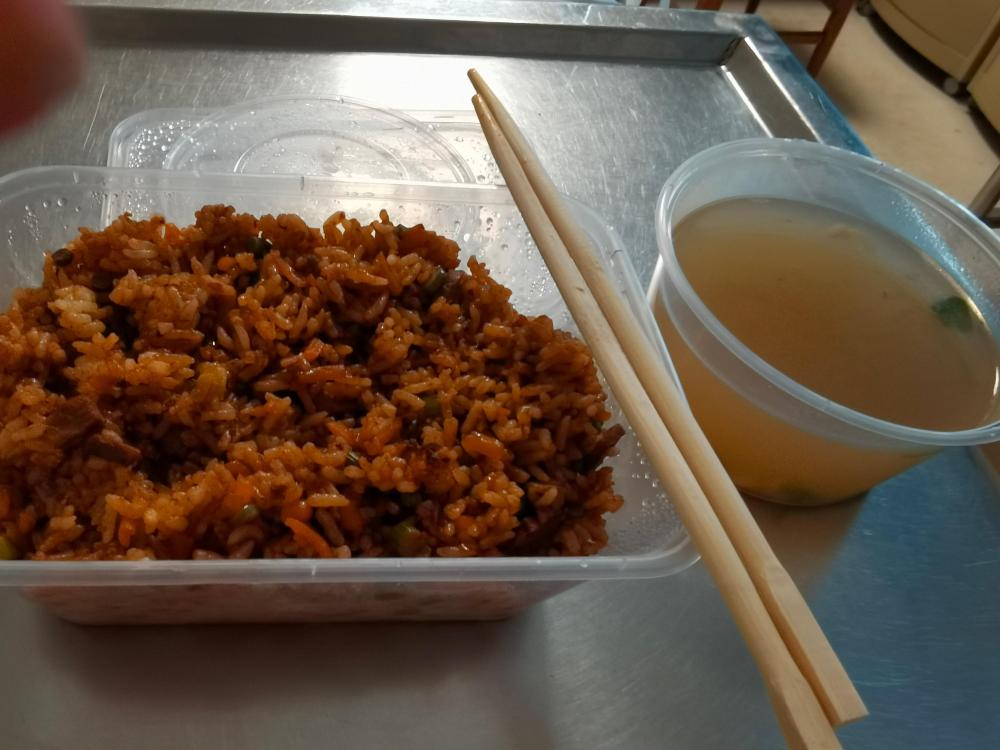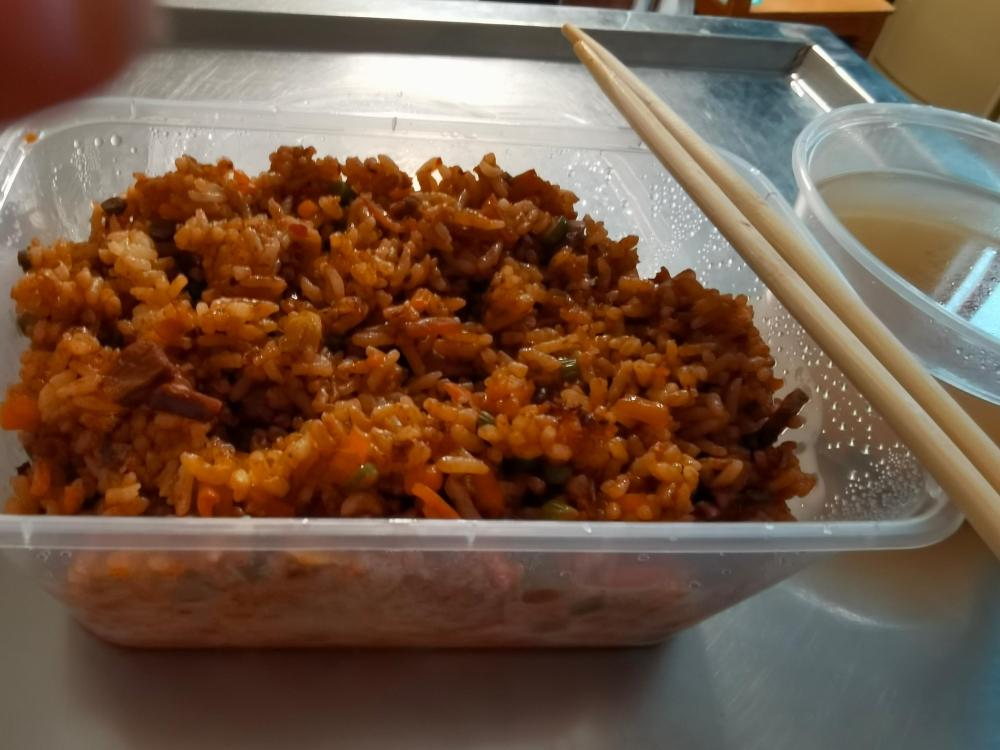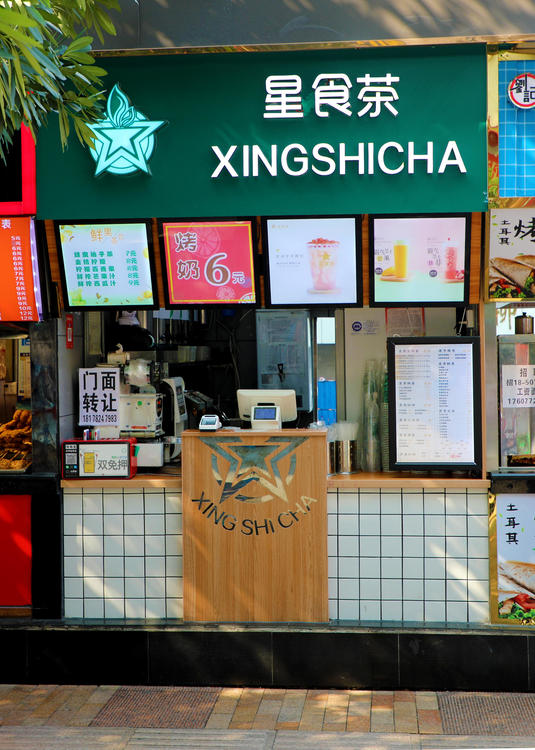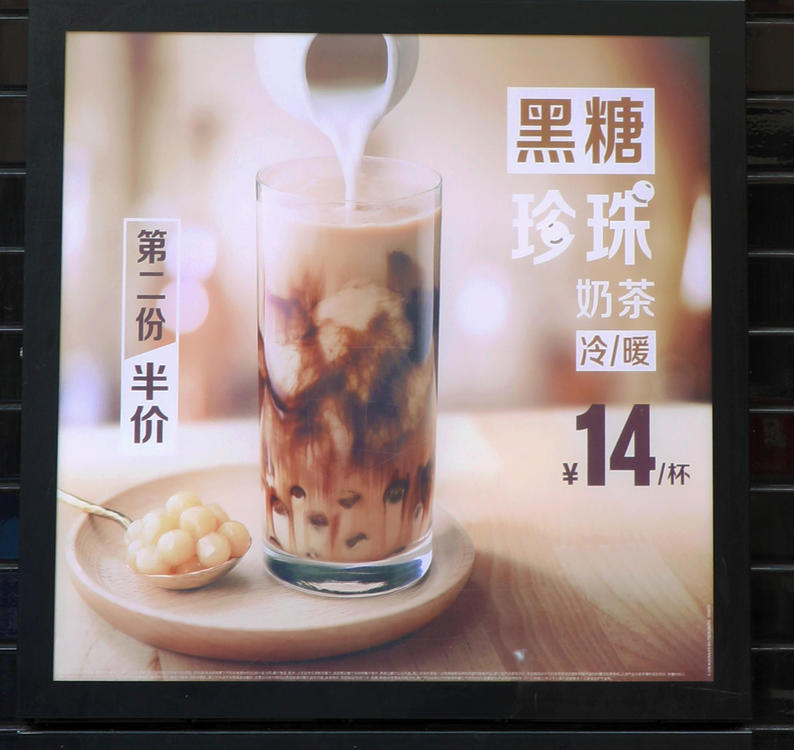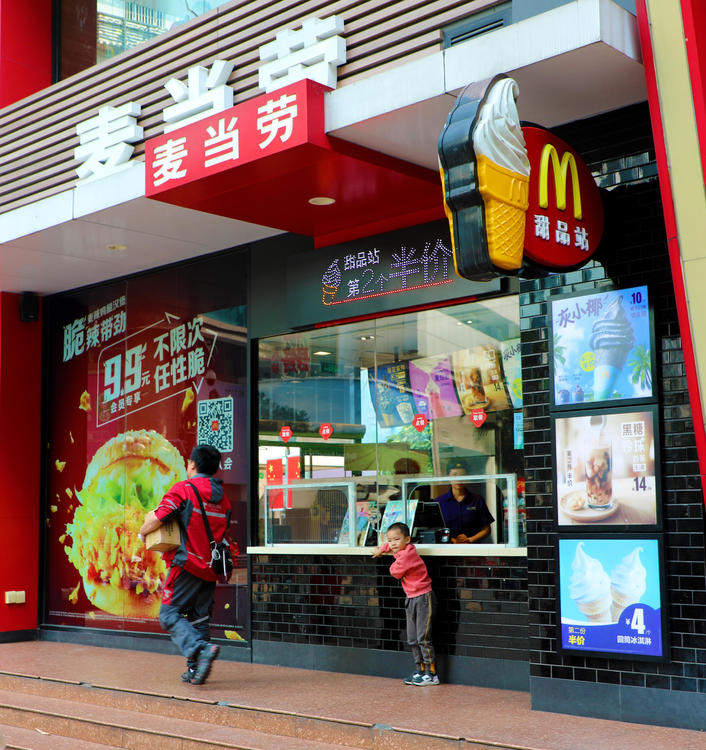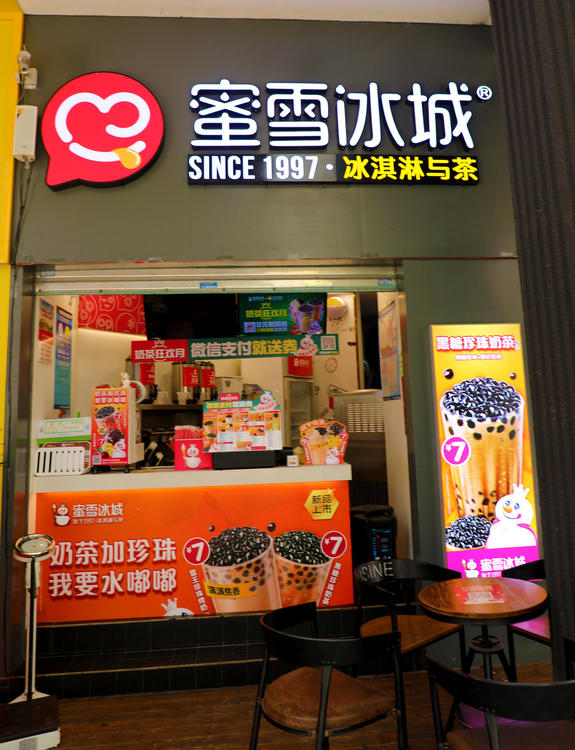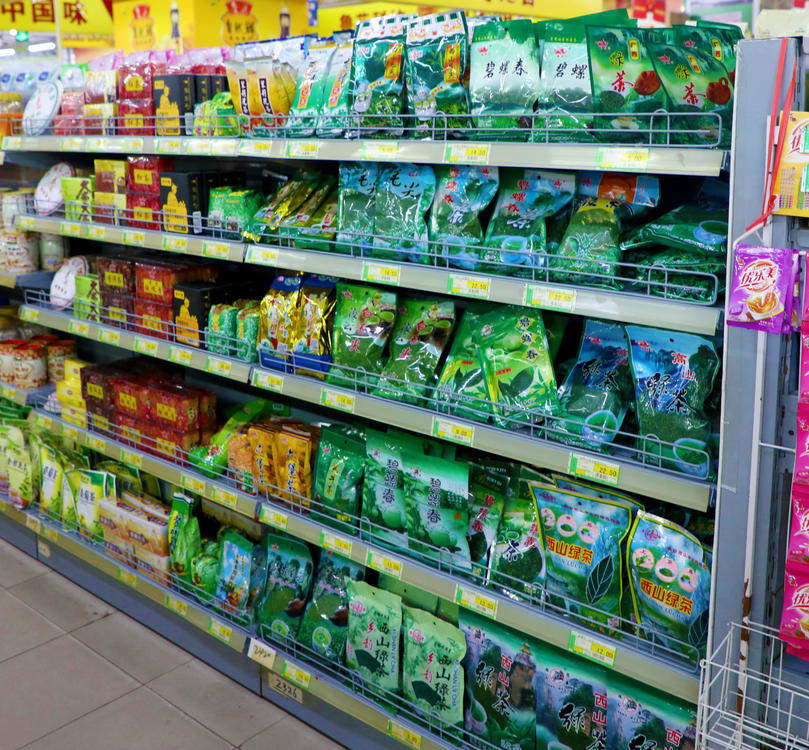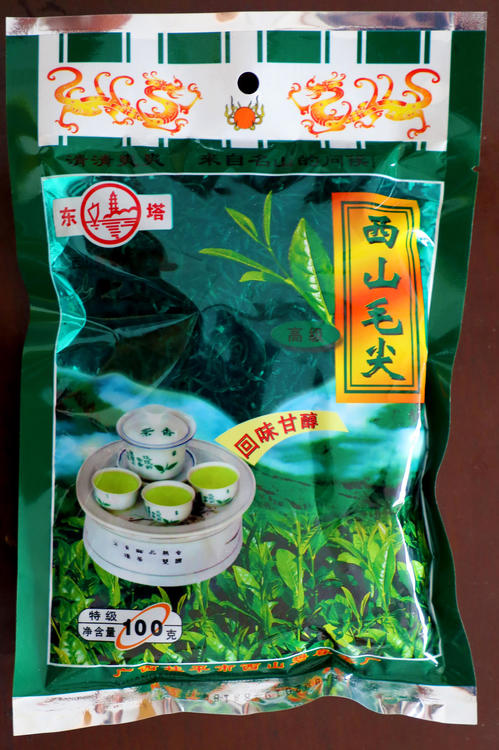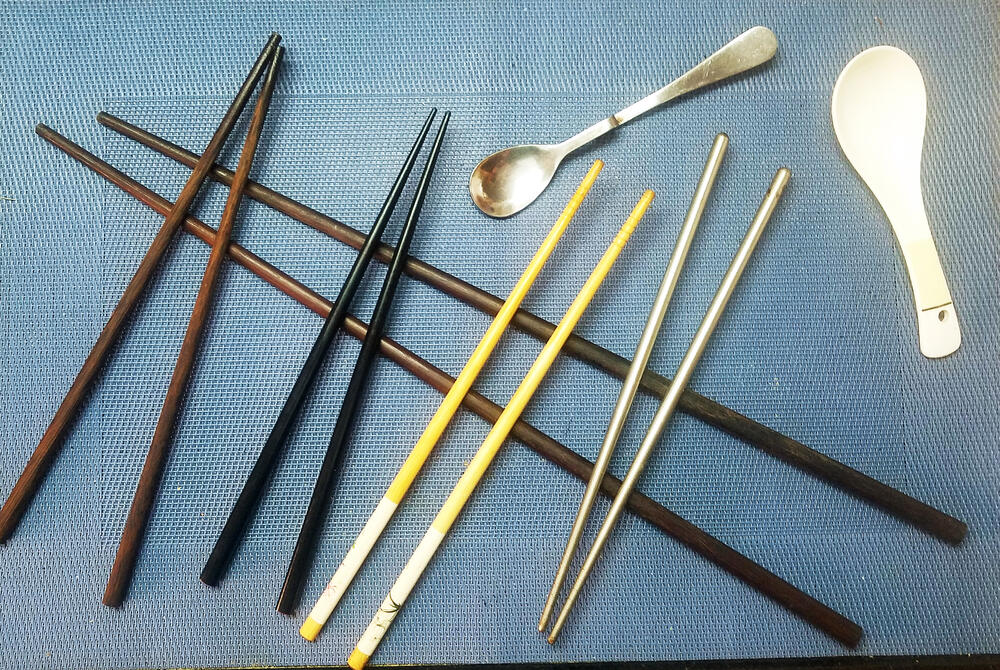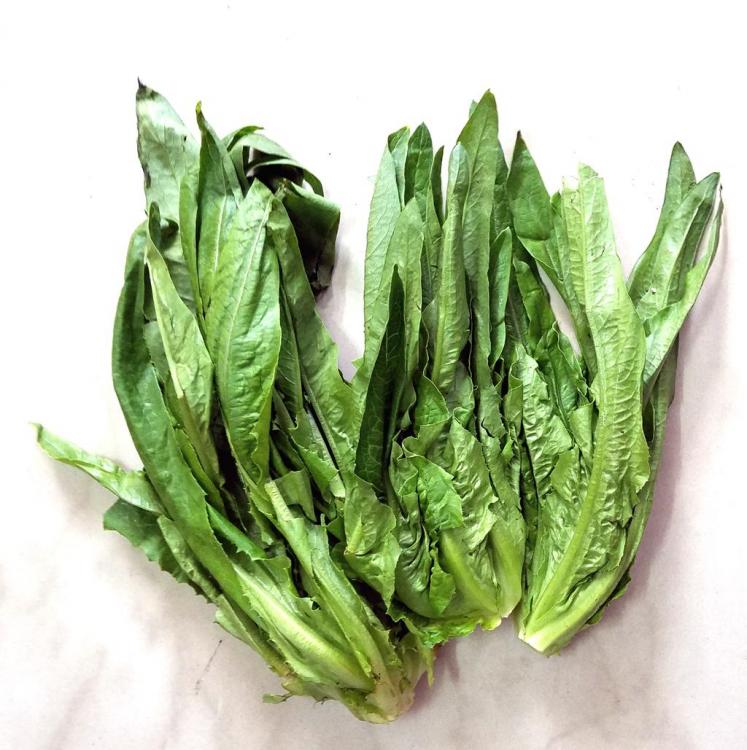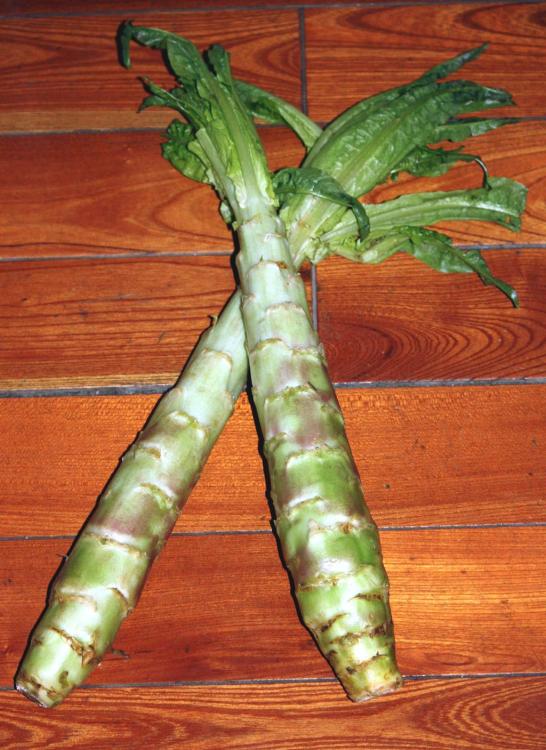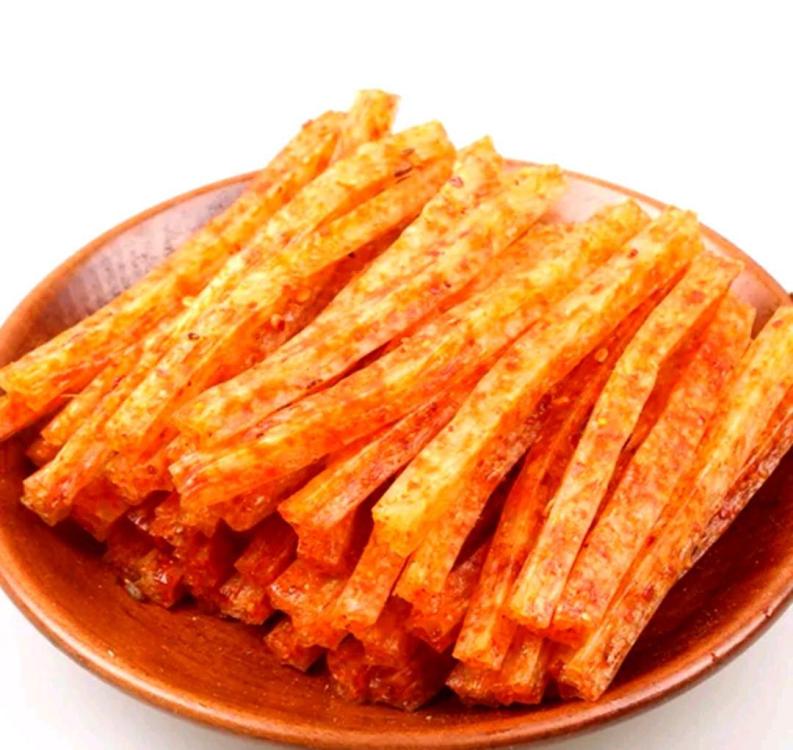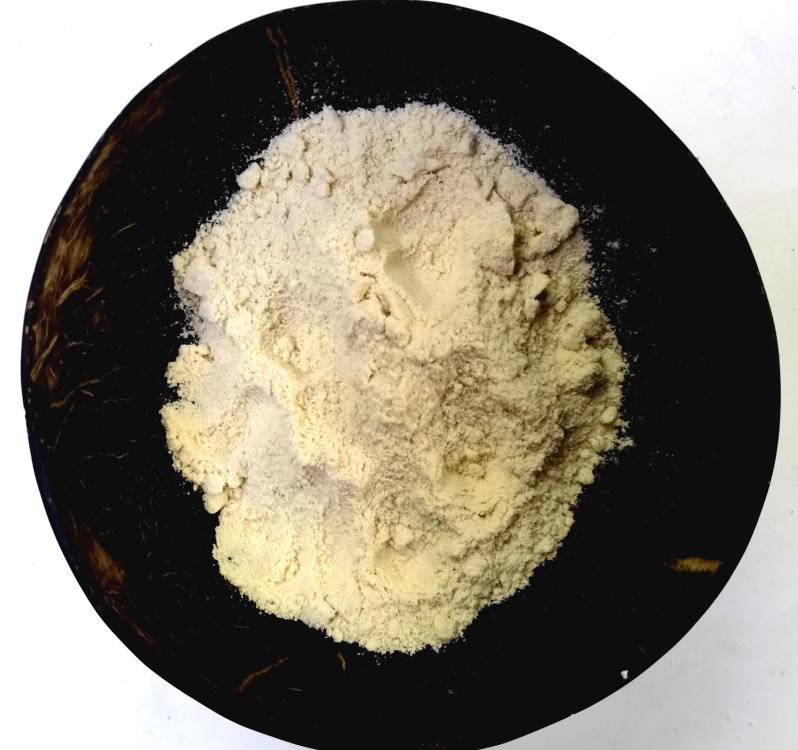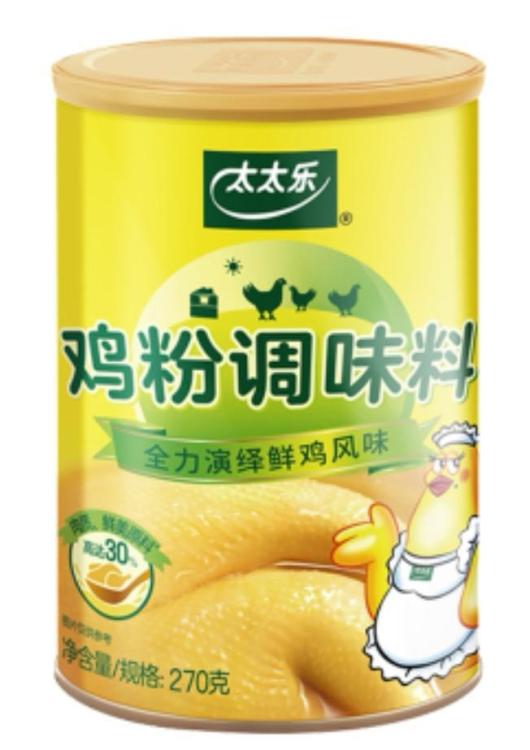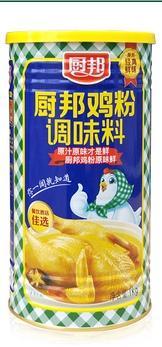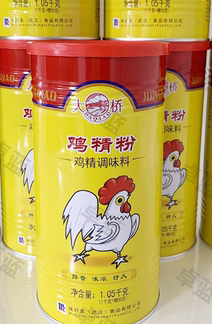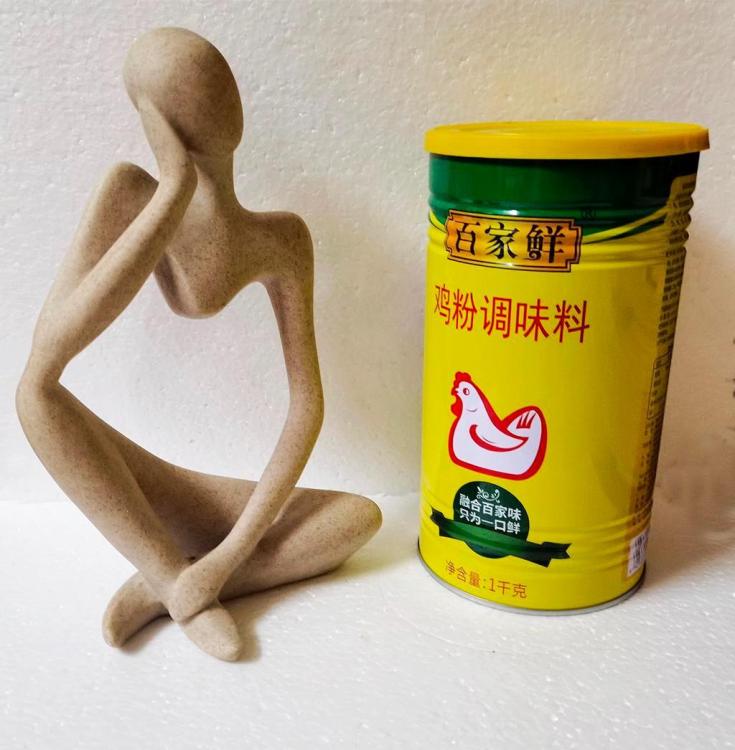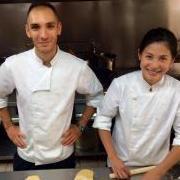Search the Community
Showing results for tags 'Chinese'.
-
Sea fish in my local supermarket In the past I've started a few topics focusing on categorised food types I find in China. I’ve done Mushrooms and Fungi in China Chinese Vegetables Illustrated Sugar in China Chinese Herbs and Spices Chinese Pickles and Preserves Chinese Hams. I’ve enjoyed doing them as I learn a lot and I hope that some people find them useful or just interesting. One I’ve always resisted doing is Fish etc in China. Although it’s interesting and I love fish, it just felt too complicated. A lot of the fish and other marine animals I see here, I can’t identify, even if I know the local name. The same species may have different names in different supermarkets or wet markets. And, as everywhere, a lot of fish is simply mislabelled, either out of ignorance or plain fraud. However, I’ve decided to give it a go. I read that 60% of fish consumed in China is freshwater fish. I doubt that figure refers to fresh fish though. In most of China only freshwater fish is available. Seawater fish doesn’t travel very far inland. It is becoming more available as infrastructure improves, but it’s still low. Dried seawater fish is used, but only in small quantities as is frozen food in general. I live near enough the sea to get fresh sea fish, but 20 years ago when I lived in Hunan I never saw it. Having been brought up yards from the sea, I sorely missed it. I’ll start with the freshwater fish. Today, much of this is farmed, but traditionally came from lakes and rivers, as much still does. Most villages in the rural parts have their village fish pond. By far the most popular fish are the various members of the carp family with 草鱼 (cǎo yú) - Ctenopharyngodon idella - Grass Carp being the most raised and consumed. These (and the other freshwater fish) are normally sold live and every supermarket, market (and often restaurants) has ranks of tanks holding them. Supermarket Freshwater Fish Tanks You point at the one you want and the server nets it out. In markets, super or not, you can either take it away still wriggling or, if you are squeamish, the server will kill, descale and gut it for you. In restaurants, the staff often display the live fish to the table before cooking it. These are either steamed with aromatics – garlic, ginger, scallions and coriander leaf / cilantro being common – or braised in a spicy sauce or, less often, a sweet and sour sauce or they are simply fried. It largely depends on the region. Note that, in China, nearly all fish is served head on and on-the-bone. 草鱼 (cǎo yú) - Ctenopharyngodon idella - grass carp More tomorrow.
-
An eG member recently asked me by private message about mushrooms in China, so I thought I'd share some information here. This is what is available in the markets and supermarkets in the winter months - i.e. now. I'll update as the year goes by. FRESH FUNGI December sees the arrival of what most westerners deem to be the standard mushroom – the button mushroom (小蘑菇 xiǎo mó gū), Agaricus bisporus. Unlike in the west where they are available year round, here they only appear when in season, which is now. The season is relatively short, so I get stuck in. The standard mushroom for the locals is the one known in the west by its Japanese name, shiitake, Lentinula edodes. They are available year round in the dried form, but for much of the year as fresh mushrooms. Known in Chinese as 香菇 (xiāng gū), which literally means “tasty mushroom”, these meaty babies are used in many dishes ranging from stir fries to hot pots. Second most common are the many varieties of oyster mushroom. The name comes from the majority of the species’ supposed resemblance to oysters, but as we are about to see the resemblance ain’t necessarily so. The picture above is of the common oyster mushroom, Pleurotus ostreatus, but the local shops aren’t common, so they have a couple of other similar but different varieties. Pleurotus geesteranus, 秀珍菇 (xiù zhēn gū) (below) are a particularly delicate version of the oyster mushroom family and usually used in soups and hot pots. 凤尾菇 (fèng wěi gū), literally “Phoenix tail mushroom”, Pleurotus pulmonarius, is a more robust, meaty variety which is more suitable for stir frying. Another member of the pleurotus family bears little resemblance to its cousins and even less to an oyster. This is pleurotus eryngii, known variously as king oyster mushroom, king trumpet mushroom or French horn mushroom or, in Chinese 杏鲍菇 (xìng bào gū). It is considerably larger and has little flavour or aroma when raw. When cooked, it develops typical mushroom flavours. This is one for longer cooking in hot pots or stews. One of my favourites, certainly for appearance are the clusters of shimeji mushrooms, Hypsizygus tessellatus. Sometimes known in English as “brown beech mushrooms’ and in Chinese as 真姬菇 zhēn jī gū or 玉皇菇 yù huáng gū, these mushrooms should not be eaten raw as they have an unpleasantly bitter taste. This, however, largely disappears when they are cooked. They are used in stir fries and with seafood. Also, they can be used in soups and stews. When cooked alone, shimeji mushrooms can be sautéed whole, including the stem or stalk. There is also a white variety which is sometimes called 白玉 菇 bái yù gū. Next up we have the needle mushrooms, . Known in Japanese as enoki, Flammulina velutipes are tiny headed, long stemmed mushrooms which come in two varieties – gold (金针菇 jīn zhēn gū) and silver (银针菇 yín zhēn gū)). They are very delicate, both in appearance and taste, and are usually added to hot pots. Then we have these fellows – tea tree mushrooms (茶树菇 chá shù gū), Agrocybe aegerita. These I like. They take a bit of cooking as the stems are quite tough, so they are mainly used in stews and soups. But their meaty texture and distinct taste is excellent. These are also available dried. Then there are the delightfully named 鸡腿菇 jī tuǐ gū or “chicken leg mushrooms”. These are known in English as "shaggy ink caps", Coprinus comatus. Only the very young, still white mushrooms are eaten, as mature specimens have a tendency to auto-deliquesce very rapidly, turning to black ‘ink’, hence the English name. Not in season now, but while I’m here, let me mention a couple of other mushrooms often found in the supermarkets. First, straw mushrooms (草菇 cǎo gū), Volvariella volvacea. Usually only found canned in western countries, they are available here fresh in the summer months. These are another favourite – usually braised with soy sauce – delicious! When out of season, they are also available canned here. Then there are the curiously named Pig Stomach Mushrooms (猪肚菇 zhū dù gū, Infundibulicybe gibba. These are another favourite. They make a lovely mushroom omelette. Also, a summer find. And finally, not a mushroom, but certainly a fungus and available fresh is the wood ear (木耳 mù ěr), Auricularia heimuer. It tastes of almost nothing, but is prized in Chinese cuisine for its crunchy texture. More usually sold dried, it is available fresh in the supermarkets now. Please note that where I have given Chinese names, these are the names most commonly used around this part of China, but many variations do exist. Coming up next - the dried varieties available.
-
I guess I do about half my food shopping in my local farmers' market and the other half in supermarkets. Today, I went to my favourite supermarket. They have lovely, very fresh vegetables, great fish and well... there isn't much they don't have. Here are a few pictures, beginning with the vegetable section:
-
Your wish is my command! Sometimes! A lot of what I say here, I will have already said in scattered topics across the forums, but I guess it's useful to bring it all into one place. First, I want to say that China uses literally thousands of herbs. But not in their food. Most herbs are used medicinally in Traditional Chinese Medicine (TCM), often in their dried form. Some of the more common are sold in supermarkets, but more often in pharmacies or small specialist stores. I also often see people on the streets with baskets of unidentified greenery for sale - but not for dinner. The same applies to spices, although more spices are used in a culinary setting than are herbs. I’ll start with Sichuan peppercorns as these are what prompted @Tropicalsenior to suggest the topic. 1. Sichuan Peppercorns Sichuan peppercorns are neither pepper nor, thank the heavens, c@rn! Nor are they necessarily from Sichuan. They are actually the seed husks of one of a number of small trees in the genus Zanthoxylum and are related to the citrus family. The ‘Sichuan’ name in English comes from their copious use in Sichuan cuisine, but not necessarily where they are grown. Known in Chinese as 花椒 (huājiāo), literally ‘flower pepper’’, they are also known as ‘prickly ash’ and, less often, as ‘rattan pepper’. The most common variety used in China is 红花椒 (hóng huā jiāo) or red Sichuan peppercorn, but often these are from provinces other than Sichuan, especially Gansu, Sichuan’s northern neighbour. They are sold all over China and, ground, are a key ingredient in “five-spice powder” mixes. They are essential in many Sichuan dishes where they contribute their numbing effect to Sichuan’s 麻辣 (má là), so-called ‘hot and numbing’ flavour. Actually the Chinese is ‘numbing and hot’. I’ve no idea why the order is reversed in translation, but it happens a lot – ‘hot and sour’ is actually ‘sour and hot’ in Chinese! The peppercorns are essential in dishes such as 麻婆豆腐 (má pó dòu fǔ) mapo tofu, 宫保鸡丁 (gōng bǎo jī dīng) Kung-po chicken, etc. They are also used in other Chinese regional cuisines, such as Hunan and Guizhou cuisines. Red Sichuan peppercorns can come from a number of Zanthoxylum varieties including Zanthoxylum simulans, Zanthoxylum bungeanum, Zanthoxylum schinifolium, etc. Red Sichuan Peppercorns Another, less common, variety is 青花椒 (qīng huā jiāo) green Sichuan peppercorn, Zanthoxylum armatum. These are also known as 藤椒 (téng jiāo). This grows all over Asia, from Pakistan to Japan and down to the countries of SE Asia. This variety is significantly more floral in taste and, at its freshest, smells strongly of lime peel. These are often used with fish, rabbit, frog etc. Unlike red peppercorns (usually), the green variety are often used in their un-dried state, but not often outside Sichuan. Green Sichuan Peppercorns Fresh Green Sichuan Peppercorns I strongly recommend NOT buying Sichuan peppercorns in supermarkets outside China. They lose their scent, flavour and numbing quality very rapidly. There are much better examples available on sale online. I have heard good things about The Mala Market in the USA, for example. I buy mine in small 30 gram / 1oz bags from a high turnover vendor. And that might last me a week. It’s better for me to restock regularly than to use stale peppercorns. Both red and green peppercorns are used in the preparation of flavouring oils, often labelled in English as 'Prickly Ash Oil'. 花椒油 (huā jiāo yóu) or 藤椒油 (téng jiāo yóu). The tree's leaves are also used in some dishes in Sichuan, but I've never seen them out of the provinces where they grow. A note on my use of ‘Sichuan’ rather than ‘Szechuan’. If you ever find yourself in Sichuan, don’t refer to the place as ‘Szechuan’. No one will have any idea what you mean! ‘Szechuan’ is the almost prehistoric transliteration of 四川, using the long discredited Wade-Giles romanization system. Thomas Wade was a British diplomat who spoke fluent Mandarin and Cantonese. After retiring as a diplomat, he was elected to the post of professor of Chinese at Cambridge University, becoming the first to hold that post. He had, however, no training in theoretical linguistics. Herbert Giles was his replacement. He (also a diplomat rather than an academic) completed a romanization system begun by Wade. This became popular in the late 19th century, mainly, I suggest, because there was no other! Unfortunately, both seem to have been a little hard of hearing. I wish I had a dollar for every time I’ve been asked why the Chinese changed the name of their capital from Peking to Beijing. In fact, the name didn’t change at all. It had always been pronounced with /b/ rather than /p/ and /ʤ/ rather than /k/. The only thing which changed was the writing system. In 1958, China adopted Pinyin as the standard romanization, not to help dumb foreigners like me, but to help lower China’s historically high illiteracy rate. It worked very well indeed, Today, it is used in primary schools and in some shop or road signs etc., although street signs seldom, if ever, include the necessary tone markers without which it isn't very helpful. A local shopping mall. The correct pinyin (with tone markers) is 'dōng dū bǎi huò'. But pinyin's main use today is as the most popular input system for writing Chinese characters on computers and cell-phones. I use it in this way every day, as do most people. It is simpler and more accurate than older romanizations. I learned it in one afternoon. I doubt anyone could have done that with Wade-Giles. Pinyin has been recognised for over 30 years as the official romanization by the International Standards Organization (ISO), the United Nations and, believe it or not, The United States of America, along with many others. Despite this recognition, old romanizations linger on, especially in America. Very few people in China know any other than pinyin. 四川 is 'sì chuān' in pinyin.
-
I would like to start this thread to post some guides to buying ingredients to cooking Chinese food, such as sauces, fresh produce and dried goods. This is for the benefits of those who are not familiar with Chinese cooking ingredients. Each page will have a picture accompanying with the description of the item, and some tips on where to find them and what to look for, and (if any) my favorite brand. Feel free to add comments. At some point, I will create an index page for easy references. Over time, we will have a comprehensive list.
-
It sometimes seems likes every town in China has its own special take on noodles. Here in Liuzhou, Guangxi the local dish is Luosifen (螺蛳粉 luó sī fěn). It is a dish of rice noodles served in a very spicy stock made from the local river snails and pig bones which are stewed for hours with black cardamom, fennel seed, dried tangerine peel, cassia bark, cloves, pepper, bay leaf, licorice root, sand ginger, and star anise. Various pickled vegetables (but especially pickled bamboo shoots), dried tofu skin, fresh green vegetables, peanuts and loads of chilli are then usually added. Few restaurants ever reveal their precise recipe, so this is tentative. Luosifen is only really eaten in small restaurants and roadside stalls. I've never heard of anyone making it at home. In order to promote tourism to the city, the local government organised a food festival featuring an event named "10,000 people eat luosifen together." (In Chinese 10,000 often just means "many".) 10,000 people (or a lot of people anyway) gathered at Liuzhou International Convention and Exhibition Centre for the grand Liuzhou luosifen eat-in. Well, they gathered in front of the centre – the actual centre is a bleak, unfinished, deserted shell of a building. I disguised myself as a noodle and joined them. 10,001. The vast majority of the 10,000 were students from the local colleges who patiently and happily lined up to be seated. Hey, mix students and free food – of course they are happy. Each table was equipped with a basket containing bottled water, a thermos flask of hot water, paper bowls, tissues etc. And most importantly, a bunch of Luosifen caps. These read “万人同品螺蛳粉” which means “10,000 people together enjoy luosifen” Yep, that is the soup pot! 15 meters in diameter and holding eleven tons of stock. Full of snails and pork bones, spices etc. Chefs delicately added ingredients to achieve the precise, subtle taste required. Noodles were distributed, soup added and dried ingredients incorporated then there was the sound of 10,000 people slurping. Surrounding the luosifen eating area were several stalls selling different goodies. Lamb kebabs (羊肉串) seemed most popular, but there was all sorts of food. Here are few of the delights on offer. Whole roast lamb or roast chicken Lamb Kebabs Kebab spice mix – Cumin, chilli powder, salt and MSG Kebab stall Crab Different crab Sweet sticky rice balls Things on sticks Grilled scorpions Pig bones and bits Snails And much more. To be honest, it wasn’t the best luosifen I’ve ever eaten, but it was wasn’t the worst. Especially when you consider the number they were catering for. But it was a lot of fun. Which was the point.
-
Do a loose search for ‘Chinese Cuisine’ and often you’ll be directed to books or websites telling you that China has eight distinct cuisines. Unfortunately, this is yet another myth. The repetition of this ‘fact’ comes from the Imperial court stating such hundreds of years ago and it becoming a cliché, both in and out of China. The eight are usually listed as: 鲁菜 (lǔ cài), Shandong cuisine 粤菜 (yuè cài) Cantonese cuisine 川菜 (chuān cài) Sichuan cuisine 苏菜 (sū cài) Jiangsu cuisine 湘菜 (xiāng cài) Hunan cuisine 浙菜 (zhè cài) Zhejiang cuisine 徽菜 (huī cài) Anhui cuisine 闽菜 (mǐn cài) Fujian cuisine The list was compiled when China’s present day borders were somewhat different. In fact, not only are there many, many more; even within these categories there are distinctly different cuisines. Hunan, for example has three distinguishably different cuisines, as does Guangxi where I live. Also, the list excludes many more. It only includes the majority Han Chinese cuisines and excludes the ethnic minority cuisines of which there are so many. It also excludes significant cuisines such as Yunnan cuisine, Guizhou cuisine, Shaanxi cuisine, Xinjiang cuisine, Dongbei cuisine, Inner Mongolian cuisine, Tibetan cuisine and more. It doesn’t even include Beijing or Shanghai, both of which have their own distinct cuisines. Over the next few posts I will attempt to herd cats and describe some of the eight, but more of the others as they tend to be less well known out of China.
-
There are two types of Oyster Sauce available. One with oyster extractives and one without. The label will clearly say whether oyster extractives are used. I prefer one with oyster extractive and my favorite is a Japanese brand, 'Nouvelle Chinoise' , while expensive, it is clearly the best flavored and strongest I have used. -Dick
-
While there have been other Chinese vegetable topics in the past, few of them were illustrated and some which were have lost those images in various "upgrades", or because they were hosted elsewhere on now defunct sites.. What I plan to do is photograph every vegetable I see and say what it is, if I know. However, this is a formidable task so it'll take time. The problem is that so many vegetables go under many different Chinese names and English names adopted from one or other Chinese language, too. For example, I know four different words for 'potato' and know there are more. And there are multiple regional preference in nomenclature. Most of what you will see will be vegetables from supermarkets, where I can see the Chinese labelling. In "farmer's" or wet markets, there is no labelling and although, If I ask, different traders will have different names for the same vegetable. Many a time I've been supplied a name, but been unable to find any reference to it from Mr Google or his Chinese counterparts. Or if I find the Chinese, can't find an accepted translation so have to translate literally. Also, there is the problem that most of the names which are used in the English speaking countries have, for historical reasons, been adopted from Cantonese, whereas 90% of Chinese speak Mandarin (普通话 pǔ tōng huà). But I will do my best to supply as many alternative names as I can find. I shall also attempt to give Chinese names in simplified Chinese characters as used throughout mainland China and then in traditional Chinese characters, now mainly only used in Hong Kong, Taiwan and among much of the Chinese diaspora. If I only give one version, that means they are the same in Simp and Trad. I'll try to do at least one a day. Until I collapse under the weight of vegetation. Please, if you know any other names for any of these, chip in. Also, please point out any errors of mine. I'll start with bok choy/choy. This is and alternatives such as pak choi or pok choi are Anglicised attempts at the Cantonese pronunciation of the Mandarin! However in Cantonese it is more often 紹菜; Jyutping: siu6 coi3. In Chinese it is 白菜. Mandarin Pinyin 'bái cài'. This literally means 'white vegetable' but really just means 'cabbage' and of course there are many forms of cabbage. Merely asking for bái cài in many a Chinese store or restaurant will be met with blank stares and requests to clarify. From here on I'm just going to translate 白菜 as 'cabbage'. So, here we go. Brassica rapa subsp. pekinensis This is what you may be served if you just ask for baicai. Or maybe not. In much of China it is 大白菜 dà bái cài meaning 'big cabbage'. In English, usually known as Napa or Nappa cabbage from the Japanese word, 菜っ葉, officially transliterated nabba, in English, Chinese cabbage, celery cabbage, Chinese leaf, etc. In Chinese, alternative names include 结球白菜 / 結球白菜 ( jié qiú bái cài ), literally knotted ball cabbage, but there are many more. This cabbage is also frequently pickled and becomes known as 酸菜 (Mand: suān cài; Cant: syun1 coi3) meaning 'sour vegetable', although this term is also used to refer to pickled mustard greens. Pickled cabbage. In 2016, a purple variety of napa cabbage was bred in Korea and that has been introduced to China as 紫罗兰白菜 (zǐ luó lán bái cài) - literally 'violet cabbage'. Purple Napa (Boy Choy)
-
A few weeks ago I bought a copy of this cookbook which is a best-selling spin off from the highly successful television series by China Central Television - A Bite of China as discussed on this thread. . The book was published in August 2013 and is by Chen Zhitian (陈志田 - chén zhì tián). It is only available in Chinese (so far). There are a number of books related to the television series but this is the only one which seems to be legitimate. It certainly has the high production standards of the television show. Beautifully photographed and with (relatively) clear details in the recipes. Here is a sample page. Unlike in most western cookbooks, recipes are not listed by main ingredient. They are set out in six vaguely defined chapters. So, if you are looking for a duck dish, for example, you'll have to go through the whole contents list. I've never seen an index in any Chinese book on any subject. In order to demonstrate the breadth of recipes in the book and perhaps to be of interest to forum members who want to know what is in a popular Chinese recipe book, I have sort of translated the contents list - 187 recipes. This is always problematic. Very often Chinese dishes are very cryptically named. This list contains some literal translations. For some dishes I have totally ignored the given name and given a brief description instead. Any Chinese in the list refers to place names. Some dishes I have left with literal translations of their cryptic names, just for amusement value. I am not happy with some of the "translations" and will work on improving them. I am also certain there are errors in there, too. Back in 2008, the Chinese government issued a list of official dish translations for the Beijing Olympics. It is full of weird translations and total errors, too. Interestingly, few of the dishes in the book are on that list. Anyway, for what it is worth, the book's content list is here (Word document) or here (PDF file). If anyone is interested in more information on a dish, please ask. For copyright reasons, I can't reproduce the dishes here exactly, but can certainly describe them. Another problem is that many Chinese recipes are vague in the extreme. I'm not one to slavishly follow instructions, but saying "enough meat" in a recipe is not very helpful. This book gives details (by weight) for the main ingredients, but goes vague on most condiments. For example, the first dish (Dezhou Braised Chicken), calls for precisely 1500g of chicken, 50g dried mushroom, 20g sliced ginger and 10g of scallion. It then lists cassia bark, caoguo, unspecified herbs, Chinese cardamom, fennel seed, star anise, salt, sodium bicarbonate and cooking wine without suggesting any quantities. It then goes back to ask for 35g of maltose syrup, a soupçon of cloves, and "the correct quantity" of soy sauce. Cooking instructions can be equally vague. "Cook until cooked". A Bite of China - 舌尖上的中国- ISBN 978-7-5113-3940-9
-
It is possibly not well-known that China has some wonderful hams, up there with the best that Spain can offer. This lack of wide knowledge, at least in the USA, is mainly down to regulations forbidding their importation. However, for travellers to China and those in places with less restrictive policies, here are some of the best. This article from the WSJ is a good introduction to one of the best - Xuanwei Ham 宣威火腿 (xuān wēi huǒ tuǐ) from Yunnan province. This Ingredient Makes Everything Better I can usually obtain Xuanwei ham here around the Chinese New Year/Spring Festival, but I also have a good friend who lives in Yunnan who sends me regular supplies. The article compares it very favourably with jamon iberico, a sentiment with which I heartily agree. Xuanwei Ham Xuanwei Ham more coming soon.
-
Having cooked meals and ingredients etc delivered to your office or home is hugely popular here in China. The biggest supplier is Meituan and you see dozens of their electric scooters dashing around every day. There isn't much you can't buy (anything from a raw egg to flock of live ostriches) and delivery is usually within 30 minutes. I have eaten from this source before but today was my first time to order for myself. This issue is due to my being confined to bed in a hospital with a more than usually dysfunctional kitchen. Anyway, here is my introductory dish. Spicy cumin beef fried rice with a vegetable soup from heaven The broth was indescribable. These dishes are from Lanzhou in NW China. Those who know the China Food Myths topic will note the lack of egg in the fried rice Cost me 26 cents US / 22 pence UK. This includes a huge welcome discount. The regular price is about 12 times that.
-
Hello! I have taken quite a few trips to China and have done my best to take cooking classes, and capture new recipes while I've been there. My favorite foods are the street foods, and with the exception of Fuchsia Dunlop's amazing books, it has been very hard to find recipes for the "real deal". The memorable foods I've had in my travels were in Xi'an, in the Muslim district where they have stall after stall of amazing street food. My favorite food was Guo Kui, which was a flaky fried dough (almost pastry-like), stuffed with minced meat, sichuan pepper and chilies. It was incredible and I cant find anything online to tell me how it's made. I'm wondering if anyone out there has a recipe they can share? Fuchsia Dunlop describes this food in her newest book, Shark's Fin and Sichuan Pepper, but unfortunately there is no recipe and I've found no way to contact the author. Any assistance is much appreciated! Thanks Marc
-
This arose from this topic, where initially @Anna N asked about tea not being served at the celebratory meal I attended. I answered that it is uncommon for tea to be served with meals (with one major exception). I was then asked for further elucidation by @Smithy. I did start replying on the topic but the answer got longer than I anticipated and was getting away from the originally intended topic about one specific meal. So here were are.. I'd say there are four components to tea drinking in China. a) When you arrive at a restaurant, you are often given a pot of tea which people will sip while contemplating the menu and waiting for other guests to arrive. Dining out is very much a group activity, in the main. When everyone is there and the food dishes start to arrive the tea is nearly always forgotten about. The tea served like this will often be a fairly cheap, common brand - usually green. You also may be given a cup of tea in a shop if your purchase is a complicated one. I recently bought a new lap top and the shop assistant handed me tea to sip as she took down the details of my requirements. Also, I recently had my eyes re-tested in order to get new spectacles. Again, a cup of tea was provided. Visit someone in an office or have a formal meeting and tea or water will be provided. b) You see people walking about with large flasks (not necessarily vacuum flasks) of tea which they sip during the day to rehydrate themselves. Taxi drivers, bus drivers, shop keepers etc all have their tea flask. Of course, the tea goes cold. I have a vacuum flask, but seldom use it - not a big tea fan. There are shops just dedicated to selling the drinks flasks. c) There has been a recent fashion for milk tea and bubble tea here, two trends imported from Hong Kong and Taiwan respectively. It is sold from kiosks and mainly attracts younger customers. McDonald's and KFC both do milk and bubble teas. Bubble and Milk Tea Stall And Another And another - there are hundreds of them around! McDonald's Ice Cream and Drinks Kiosk. McDonald's Milk Tea Ad d) There are very formal tea tastings and tea ceremonies, similar in many ways to western wine tastings. These usually take place in tea houses where you can sample teas and purchase the tea for home use. These places can be expensive and some rare teas attract staggering prices. The places doing this pride themselves on preparing the tea perfectly and have their special rituals. I've been a few times, usually with friends, but it's not really my thing. Below is one of the oldest serious tea houses in the city. As you can see, they don't go out of their way to attract custom. Their name implies they are an educational service as much as anything else. Very expensive! Tea House Supermarkets and corner shops carry very little tea. This is the entire tea shelving in my local supermarket. Mostly locally grown green tea. Local Guangxi Tea The most expensive in the supermarket was this Pu-er Tea (普洱茶 pǔ ěr chá) from Yunnan province. It works out at ¥0.32per gram as opposed to ¥0.08 for the local stuff. However, in the tea houses, prices can go much, much higher!
- 31 replies
-
- 10
-

-

-
China manufactures by far the majority of the world’s microwaves, but while it is true that many people in mainland China have them, very few are actually used for cooking. They are mostly seen as tools to reheat the last meal’s leftovers. Of all those microwaves, those capable of baking (convection microwaves) are a small percentage and three to five times more expensive. Even those who do own such things seldom bake in them and they can’t bake everything. There was a brief fashion about eight years ago for baking, but most people were using toaster ovens to bake Western style cakes. Nothing Chinese. Several shops opened selling the appropriate ingredients. 90% of them lasted a year or two at most. People moved on the next craze. The bookshops had a few Western style bakery cookbooks, but no longer.
-
Chinese food must be among the most famous in the world. Yet, at the same time, the most misunderstood. I feel sure (hope) that most people here know that American-Chinese cuisine, British-Chinese cuisine, Indian-Chinese cuisine etc are, in huge ways, very different from Chinese-Chinese cuisine and each other. That's not what I want to discuss. Yet, every day I still come across utter nonsense on YouTube videos and Facebook about the "real" Chinese cuisine, even from ethnically Chinese people (who have often never been in China). Sorry YouTube "influencers", but sprinkling soy sauce or 5-spice powder on your cornflakes does not make them Chinese! So what is the "authentic" Chinese food? Well, like any question about China, there are several answers. It is not surprising that a country larger than western Europe should have more than one typical culinary style. Then, we must distinguish between what you may be served in a large hotel dining room, a small local restaurant, a street market stall or in a Chinese family's home. That said, in this topic, I want to attempt to debunk some of the more prevalent myths. Not trying to start World War III. But don't get me started on Crab Frigging Rangoon! When I moved to China from the UK 25 years ago, I had my preconceptions. They were all wrong. Sweet and sour pork with egg fried rice was reported to be the second favourite dish in Britain, and had, of course, to be preceded by a plate of prawn/shrimp crackers. All washed down with a lager or three. Yet, in that quarter of a century, I've seldom seen a prawn cracker; they are Indonesian, not Chinese. And egg fried rice is usually eaten as a quick dish on its own, not usually as an accompaniment to main courses. Every menu featured a starter of prawn/shrimp toast which I have never seen in mainland China - just once in Hong Kong. But first, one myth needs to be dispelled. The starving Chinese! When I was a child I was encouraged to eat the particularly nasty bits on the plate by being told that the starving Chinese would lap them up. My suggestion that we could post it to them never went down too well. At that time (the late fifties) there was indeed a terrible famine in China (almost entirely manmade (Maomade)). When I first arrived in China, it was after having lived in Soviet Russia and I expected to see the same long lines of people queuing up to buy nothing very much in particular. Instead, on my first visit to a market (in Hunan Province), I was confronted with a wider range of vegetables, seafood, meat and assorted unidentified frying objects than I have ever seen anywhere else. And it was so cheap I couldn't convert to UK pounds or any other useful currency. I'm going to start with some of the simpler issues - later it may get ugly! 1. Chinese people eat everything with chopsticks. No, they don't! Most things, yes, but spoons are also commonly used in informal situations. I recently had lunch in a university canteen. It has various stations selling different items. I found myself by the fried rice stall and ordered some Yangzhou fried rice. Nearly all the students and faculty sitting near me were having the same. I was using my chopsticks to shovel the food in, when I noticed that I was the only one doing so. Everyone else was using spoons. On investigating, I was told that the lunch break is so short at only two-and-a-half hours that everyone wants to eat quickly and rush off for their compulsory siesta. I've also seen claims that people eat soup with chopsticks. Nonsense. While people use chopsticks to pick out choice morsels from the broth, they will drink the soup by lifting their bowl to their mouths like cups. They ain't dumb! Anyway, with that very mild beginning, I'll head off and think which on my long list will be next. Thanks to @KennethT for advice re American-Chinese food.
-
Hello everyone, This is my first post, so please tell me if I've made any mistakes. I'd like to learn the ropes as soon as possible. I first learned of this cookbook from The Mala Market, easily the best online source of high-quality Chinese ingredients in the west. In the About Us page, Taylor Holiday (the founder of Mala Market) talks about the cookbooks that inspired her. This piqued my interest and sent me down a long rabbit hole. I'm attempting to categorically share everything I've found about this book so far. Reading it online Early in my search, I found an online preview (Adobe Flash required). It shows you the first 29 pages. I've found people reference an online version you can pay for on the Chinese side of the internet. But to my skills, it's been unattainable. The Title Because this book was never sold in the west, the cover, and thus title, were never translated to English. Because of this, when you search for this book, it'll have several different names. These are just some versions I've found online - typos included. Sichuan (China) Cuisine in Both Chinese and English Si Chuan(China) Cuisinein (In English & Chinese) China Sichuan Cuisine (in Chinese and English) Chengdu China: Si Chuan Ke Xue Ji Shu Chu Ban She Si Chuan(China) Cuisinein (Chinese and English bilingual) 中国川菜:中英文标准对照版 For the sake of convenience, I'll be referring to the cookbook as Sichuan Cuisine from now on. Versions There are two versions of Sichuan Cuisine. The first came out in 2010 and the second in 2014. In an interview from Flavor & Fortune, a (now defunct) Chinese cooking magazine, the author clarifies the differences. That is all of the information I could find on the differences. Nothing besides that offhanded remark. The 2014 edition seems to be harder to source and, when available, more expensive. Author(s) In the last section, I mentioned an interview with the author. That was somewhat incorrect. There are two authors! Lu Yi (卢一) President of Sichuan Tourism College, Vice Chairman of Sichuan Nutrition Society, Chairman of Sichuan Food Fermentation Society, Chairman of Sichuan Leisure Sports Management Society Du Li (杜莉) Master of Arts, Professor of Sichuan Institute of Tourism, Director of Sichuan Cultural Development Research Center, Sichuan Humanities and Social Sciences Key Research Base, Sichuan Provincial Department of Education, and member of the International Food Culture Research Association of the World Chinese Culinary Federation Along with the principal authors, two famous chefs checked the English translations. Fuchsia Dunlop - of Land of Plenty fame Professor Shirley Cheng - of Hyde Park New York's Culinary Institute of America Fuchsia Dunlop was actually the first (and to my knowledge, only) Western graduate from the school that produced the book. Recipes Here are screenshots of the table of contents. It has some recipes I'm a big fan of. ISBN ISBN 10: 7536469640 ISBN 13: 9787536469648 As far as I can tell, the first and second edition have the same ISBN #'s. I'm no librarian, so if anyone knows more about how ISBN #'s relate to re-releases and editions, feel free to chime in. Publisher Sichuan Science and Technology Press 四川科学技术出版社 Cover Okay... so this book has a lot of covers. The common cover A red cover A white cover A white version of the common cover An ornate and shiny cover There may or may not be a "Box set." At first, I thought this was a difference in book editions, but that doesn't seem to be the case. As far as covers go, I'm at a loss. If anybody has more info, I'm all ears. Buying the book Alright, so I've hunted down many sites that used to sell it and a few who still have it in stock. Most of them are priced exorbitantly. AbeBooks.com ($160 + $15 shipping) Ebay.com - used ($140 + $4 shipping) PurpleCulture.net ($50 + $22 shipping) Amazon.com ($300 + $5 shipping + $19 tax) A few other sites in Chinese I bought a copy off of PurpleCuture.net on April 14th. When I purchased Sichuan Cuisine, it said there was only one copy left. That seems to be a lie to create false urgency for the buyer. My order never updated past processing, but after emailing them, I was given a tracking code. It has since landed in America and is in customs. I'll try to update this thread when (if) it is delivered. Closing thoughts This book is probably not worth all the effort that I've put into finding it. But what is worth effort, is preserving knowledge. It turns my gut to think that this book will never be accessible to chefs that have a passion for learning real Sichuan food. As we get inundated with awful recipes from Simple and quick blogs, it becomes vital to keep these authentic sources available. As the internet chugs along, more and more recipes like these will be lost. You'd expect the internet to keep information alive, but in many ways, it does the opposite. In societies search for quick and easy recipes, a type of evolutionary pressure is forming. It's a pressure that mutates recipes to simpler and simpler versions of themselves. They warp and change under consumer pressure till they're a bastardized copy of the original that anyone can cook in 15 minutes. The worse part is that these new, worse recipes wear the same name as the original recipe. Before long, it becomes harder to find the original recipe than the new one. In this sense, the internet hides information.
-
A Gremolata reader is looking for Chinese Mustard (either powdered or already mixed). I have not been able to reconnoitre any of the China towns, and am lazily posting in the hope that that there's a TO eGulleter that knows where to find...
-
I am looking for a recipe for custard buns, those white steamed buns with bright yellow egg custard in the middle. I haven't seen any recipes for this anywhere, not even Wei Chuan. Can anyone help? Also, what kind of flour do you use for your bao recipes? I like my bao dough to turn out unnaturally white and very fluffy just like at Koi Palace in San Francisco. But I think it's my flour or something that is not letting do that. Help! Also, does anyone know of a really good recipe for shanghai "juicy" dumplings? Soup dumplings? custard tarts? Thanks in advance.
-
I’m an idiot. It’s official. A couple of weeks back, on another thread, the subject of celtuce and its leafing tops came up (somewhat off-topic). Someone said that the tops are difficult to find in Asian markets and I replied that I also find the tops difficult to find here in China. Nonsense. They are very easy to find. They just go under a completely different name from the stems – something which had slipped my very slippery mind. So, here on-topic is some celtuce space. First, for those who don’t know what celtuce is, let me say it is a variety of lettuce which looks nothing like a lettuce. It is very popular in southern mainland China and Taiwan. It is also known in English as stem lettuce, celery lettuce, asparagus lettuce, or Chinese lettuce. In Chinese it is 莴笋 wō sǔn or 莴苣 wō jù, although the latter can simply mean lettuce of any variety. Lactuca sativa var. asparagina is 'celtuce' for the technically minded. Those in the picture are about 40 cm (15.7 inches) long and have a maximum diameter of 5 cm (2 inches). The stems are usually peeled, sliced and used in various stir fries, although they can also be braised, roasted etc. The taste is somewhere between lettuce and celery, hence the name. The texture is more like the latter. The leafing tops are, as I said, sold separately and under a completely different name. They are 油麦菜 yóu mài cài. These taste similar to Romaine lettuce and can be eaten raw in salads. In Chinese cuisine, they are usually briefly stir fried with garlic until they wilt and served as a green vegetable – sometimes with oyster sauce. If you can find either the stems or leaves in your Asian market, I strongly recommend giving them a try.
-
I've mentioned the craze for Luosifen which led to 6 million sheep following each other to Liuzhou over the CNY holiday to try a dish half of them hoped to hate. But it's not the only insane craze. Back in summer 1998, when I was living in Hunan, there was catastrophic flooding which wiped out the soy bean harvest. Thousands of farmers were hit by disaster. A couple of the more enterprising kind started making a kind of snack product using wheat flour rather than the hard-hit soya flour normally used in their cuisine. Basically they made wheat gluten strips which they slavered in chilli. These they called S: 辣条; T: 辣條 (là tiáo), 'spicy strips' and sold them outside schools for mere cents. Latiao - image from Meituan food delivery app. A billion dollar industry was born. Most of the customers were and still are schoolchildren who went crazy for the addictive if not nutritious snacks. According to an article in Global Times, China's uber-nationalist State-owned English language 'newspaper', latiao has gone viral globally. I don't believe a word of it. In China, yes. Globally? Have you or your children, grand-children, great-grand-children even heard, never mind fallen for this? For the record, I've never eaten them. A non-hysterical history of the craze is here. https://www.theworldofchinese.com/2024/02/stripped-down-the-story-behind-chinas-favorite-snack/
-
A side discussion on the Dinner 2024 topic promoted this. Chinese cooks, from the most elevated chefs to the home cook and all the way down to this crazy foreigner in their midst, swear by 鸡粉 (jī fěn), chicken powder. It is used to enhance or even make stocks or braising liquids; it is sprinkled on stir fries and other dishes like any other seasoning; it is added to drinks. I've even seen it added to cocktails. Anywhere umami is wanted. Knorr and other western brands can be found in China but are not particularly popular. Lee Kum Kee was mentioned but I've never seen that particular LKK product in China. KKK products, which I have never rated, are more popular abroad. So, I thought it may be useful to mention the most popular brands here, some of which are likely to be available in Asian markets. Before doing so, I will say that most Chinese brands unashamedly contain MSG. I have no intention of resurrecting that horse which is not only dead but has been utterly cremated, mourned, disinterred and reburied several times before. Nothing wrong with MSG. So, some brands. 厨邦 (chú bāng) means 'kitchen nation'. It is medium level brand with less of a pronounced flavour as some of the others below. Certainly not first choice. 大桥 (dà qiáo) means 'great bridge' and while their powder is fine I wouldn't extend that to 'great' among the following. 太太乐 (tài tai lè) Mrs Le. Mrs Happy is a popular brand which I happily put in second place. Umami rich with a good chicken flavor. 百家鲜 (bǎi jiā xiǎn) literally means '100 households' choice', but 百 also just means 'all kinds of'. All kinds of households' choice. It is certainly the biggest seller. It smells and tastes like roast chicken straight from the oven. I'd bet of the 96 apartments in my block, 90% have a pack in the kitchen. I buy it in 1kg tubs and am never without it. Restaurants buy it by the sack load.
-
Chef Wang is one of my favorite YouTube channels, and a few weeks ago he got into trouble with the system. HERE is the CNN version of the story. HERE'S a slightly biased video explaining the cultural implications a bit more. My 5 second summary: A long-forgotten Chinese general was hiding in the mountains during a war, and decided to cook egg fried rice, which sent off smoke plumes that alerted the enemy of his whereabouts. Stupid mistake. So, if you cook egg fried rice near the end of September, when this incident happened, you are considered unpatriotic. Chef Wang released an egg fried rice video a few weeks ago, which is now gone from his play list. I saw the video and thought it was an odd step backwards in his repertoire, but he does do quite a bit of home cooking on top of his restaurant quality dishes. Was it on purpose? Who knows, but he apologized and said he would never release an egg fried rice video again. He hasn't posted any videos since. FWIW, he lightly argued that he releases numerous fried rice videos throughout the year, so this was just poorly timed. Well, I hope he's able to come back because quite frankly his channel was a wonderful gateway to Chinese culture, and the far vast majority of the world would have had no idea of the backstory had the Chinese government not alerted us to the gaff.
-
Hi all, I work in a Chinese restaurant here in Taipei, Taiwan and we'd like to present a video teaching you how to make Radish Cakes! Many of you may know this popular dim sum dish by its Cantonese name "Lo Bak Go". This is our own personal variation on the traditional Radish Cake, so you'll see something a bit different than you're used to! Enjoy the video, hope you have as much fun watching as we did making! Drunken Monkey Eats Taiwan! How to Make Radish Cakes 蘿蔔糕 Also if anyone has any questions about Chinese or Taiwanese cooking I'm happy to answer!
-
Hi all, is it practical to make your own conpoy (dried scallops)? I have recently made a batch of XO sauce and want to try some more variations but the problem is getting conpoy at a reasonable price. I have had to pay $18 for 100g and I can buy great frozen scallops for <$20 per Kg. I would expect that the drying would result in a dry weight of about 20% but this would be half the cost of buying conpoy. Has anybody tried this or know of a good method? Ar they cured or cooked before drying? Thanks Simon


